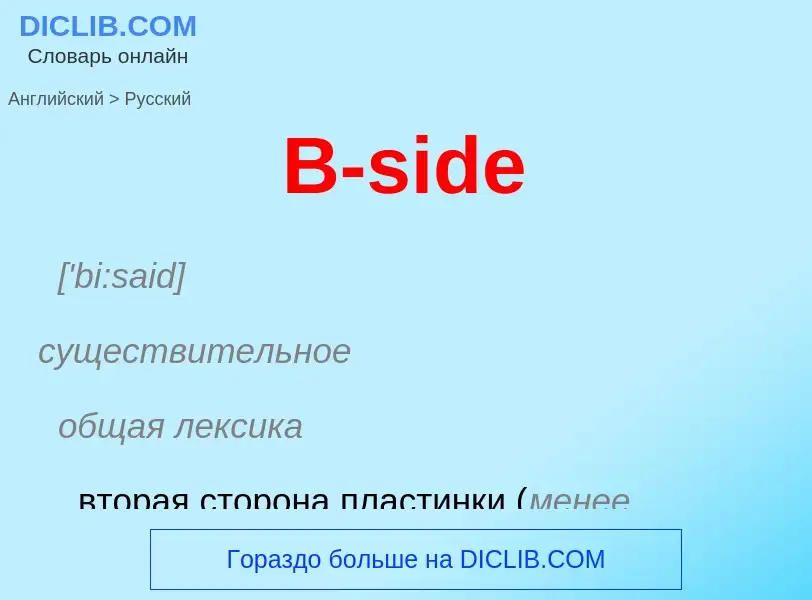Traduzione e analisi delle parole tramite l'intelligenza artificiale ChatGPT
In questa pagina puoi ottenere un'analisi dettagliata di una parola o frase, prodotta utilizzando la migliore tecnologia di intelligenza artificiale fino ad oggi:
- come viene usata la parola
- frequenza di utilizzo
- è usato più spesso nel discorso orale o scritto
- opzioni di traduzione delle parole
- esempi di utilizzo (varie frasi con traduzione)
- etimologia
B-side - traduzione in russo
['bi:said]
существительное
общая лексика
вторая сторона пластинки (менее популярная)
песня на второй стороне пластинки
[bi:]
существительное
общая лексика
2-я буква английского алфавита
в грам. знач. прил. (также как компонент сложных слов)
имеющий форму буквы B
B-образный
второсортный
второразрядный
второстепенный
второй (по счёту)
вторая буква англ. алфавита
условное обозначение чего-л., следующего за первым по порядку, сортности и т. п.
американизм
отметка «хорошо» (B)
математика
b (обозначение известного числа) (b)
музыка
си (B)
си
Wikipedia

The A-side and B-side are the two sides of phonograph records and cassettes; these terms have often been printed on the labels of two-sided music recordings. The A-side usually features a recording that its artist, producer, or record company intends to be the initial focus of promotional efforts and radio airplay and hopefully become a hit record. The B-side (or "flip-side") is a secondary recording that typically receives less attention, although some B-sides have been as successful as, or more so than, their A-sides.
Use of this language has largely declined in the 21st century as the music industry has transitioned away from analog recordings towards digital formats without physical sides, such as CDs, downloads and streaming. Nevertheless, some artists and labels continue to employ the terms A-side and B-side metaphorically to describe the type of content a particular release features, with B-side sometimes representing a "bonus" track or other material. The term B-side carries a more expansive definition in the K-pop industry, referring to all tracks on an album that are not marketed as title tracks.


![A metal letter "B" with its [[homophone]], a [[bee]] insect, standing on it A metal letter "B" with its [[homophone]], a [[bee]] insect, standing on it](https://commons.wikimedia.org/wiki/Special:FilePath/Big-small-B.jpg?width=200)




![Late [[Renaissance]] or early [[Baroque]] design of a B, from 1627 Late [[Renaissance]] or early [[Baroque]] design of a B, from 1627](https://commons.wikimedia.org/wiki/Special:FilePath/Newes ABC Buchlein MET DP855602.jpg?width=200)



